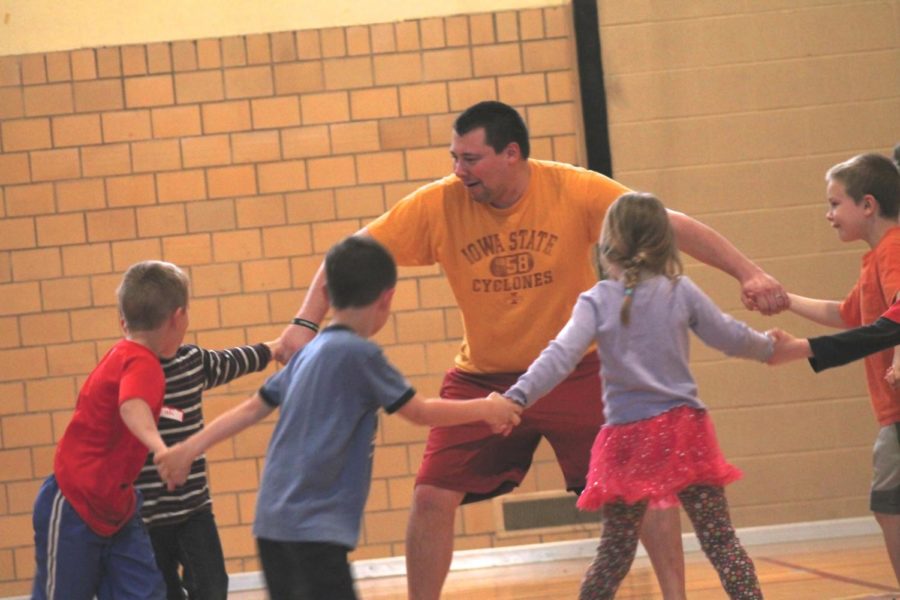Skills for the future: Students help home-schooled kids get active
April 30, 2014
Iowa State University created a program several years ago that aims to get home-schooled children from kindergarten to fourth grade physically active.
The program is set in Forker Hall under the supervision of ISU professors and students that are in the human sciences department.
The children visit Iowa State every Monday from 2-3 p.m. for a total of 12 weeks. The physical activities they engage in include swimming, dancing, running and other active sports.
About three groups with 35 children run and play each Monday on campus, giving the home-schooled children the opportunity to interact with their peers. The physical education class not only enhances their physical skills, but also they’re cognitive and intellectual abilities, too.
Spyridoula Vazou, assistant professor of kinesiology, loves to interact with the children.
“Home-schooled children are very respectful, have a positive attitude and are very interested in meeting other people,” Vazou said. “In young kids, it is very important to be in physical education in order to involve motor skills, work as a team and self-control. It’s a great experience to see them develop these skills.”
In another perspective, ISU students also benefit from this program. by getting to experience real-life teaching.
In Kinesiology 284, students pair up to teach this program. One student is in charge of giving feedback and the other one is responsible for teaching the children. Vazou teaches the program first, and after four or five weeks, the students get to experience her job.
Vazou also said the program is demanding for both Iowa State and the home-schooled children. They make sure that it’s not just a recess by involving a lot of physical skills and involving structure to the program.
Vazou said she was excited and proud of her students.
“I have seen huge improvements in my college students,” she said. “They are more confident and skillful in teaching. By the end they know how to deal and manage a real classroom, and they get better as teachers. If they see the children bored, they are definitely not doing their job correctly.”
Amanda Mischo, graduate student in kinesiology with specifics in exercise psychology, said the program has helped her become a better person.
“I’ve grown as a teacher with this program,” Mischo said. “My research is with kids, and this has helped me get active with them. This gave me an opportunity to structure children’s classes and restructure my own classes.”
However, that structure doesn’t mean there aren’t any surprises.
“I had to teach creative dance, and that day I was given a short notice,” Mischo said. “I came up with a lesson plan in about two hours, and it was stressful and overwhelming, but when I got in front of [the children], everything went off without a problem. This reassured me how good I am at what I do.”
Overall, the program focuses on seeing the children grow, meaning commitment to sticking with the program is necessary to see progress.
“It is a very rewarding experience because I get to see the growth in both types of people [children and students],” Vazou said.







